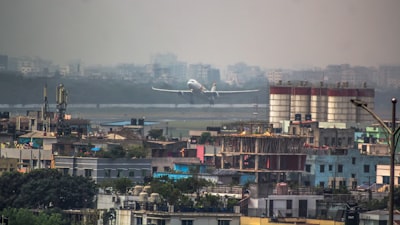Recurring Aircraft Defects: India’s Aviation at a Crossroads
India’s aviation sector, often celebrated for its rapid growth and increasingly modern fleet, now faces an unsettling challenge: the persistent reappearance of defects on aircraft, as flagged by the nation’s aviation regulator. This development is more than a technical issue—it’s a critical test of India’s commitment to aviation safety, regulatory oversight, and public trust.
The Heart of the Matter
Repeated failures point to systemic cracks rather than mere technical glitches. When defects reappear after being ostensibly fixed, several penetrating questions arise:
- Are airlines routinely taking a reactive, rather than proactive, approach to maintenance?
- Is there a skills or staffing deficit among engineering teams?
- Do economic pressures from intense competition compromise safety investments?
- Is regulatory follow-up robust enough to ensure long-term compliance?
“A defect once is a warning, twice is negligence, and thrice is a crisis in the making.”
The High-Stakes Dilemma
| Stakeholder | Risks | Accountability |
|---|---|---|
| Passengers | Safety threats, loss of trust in airlines/regulators | Demand transparency |
| Airlines | Brand damage, regulatory penalties, cost escalation | Invest in systems & skills |
| Regulator | Credibility on the line, pressure from industry growth | Tighten oversight |
| Economy | Impact on tourism, business, insurance rates | Adopt global best practices |
The losses—from lives at stake to reputational harm—extend far beyond the tarmac.
Global Comparisons and Lessons
Globally, aviation authorities wield punitive and remedial powers; the US FAA and Europe’s EASA impose massive fines and ground fleets when patterns emerge. In contrast, India’s enforcement often oscillates between punitive fines and warnings, with less focus on systemic reforms. The challenge is to move from reacting to individual incidents to building a culture of preventive safety—one where defect recurrence is unthinkable.
- Case in Point: In the wake of such reports, countries like Singapore or Australia introduce stricter standards, periodic audits, and mandatory retraining. This holistic approach drives long-term safety improvements.
Beyond the Obvious: The Data Imperative
What’s most alarming is the potential undercurrent of underreporting or insufficient root-cause analysis. True aviation safety requires not just fixing today’s issue but understanding why it kept happening. Enhanced digital record-keeping, cross-airline information sharing, and continuous learning are not optional—they are survival essentials.
“In aviation, history doesn’t just repeat itself—it amplifies the consequences.”
Looking Ahead
India’s aviation sector is at an inflection point. Regulatory vigilance must transition from box-ticking to fostering a culture in which recurrence itself is viewed as failure. Airlines, in turn, must see maintenance as a strategic necessity, not a cost center. Only then can the sector maintain its impressive ascent—safely and sustainably.
This article was inspired by the headline: 'India aviation regulator says multiple defects reappearing on aircraft'.

Comments
No comments yet. Be the first to comment!